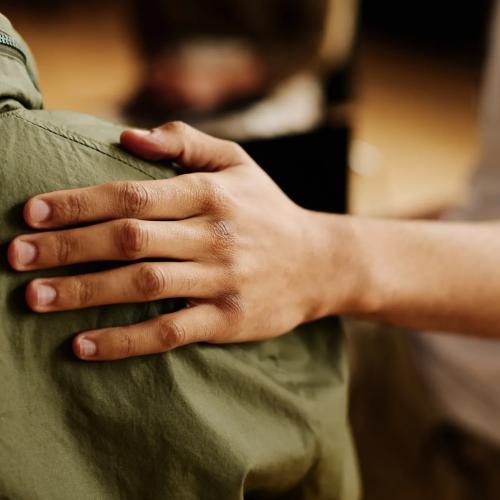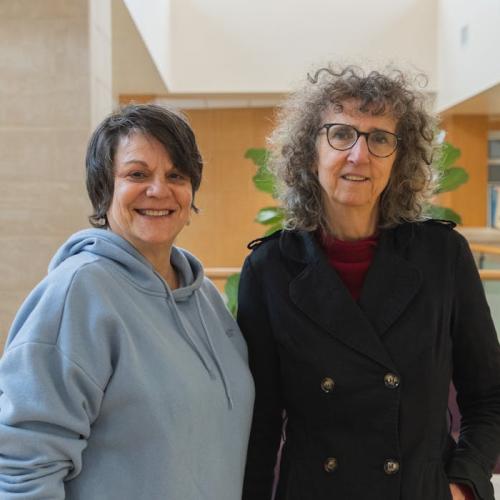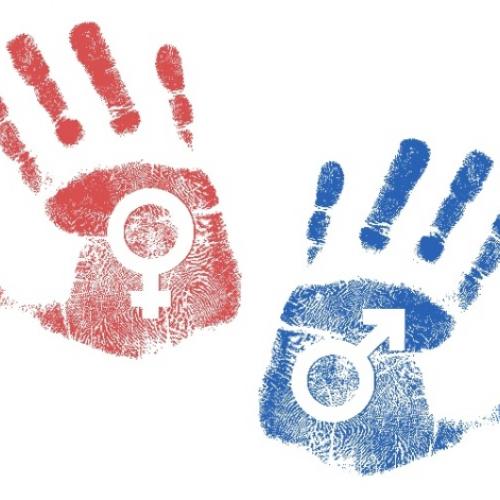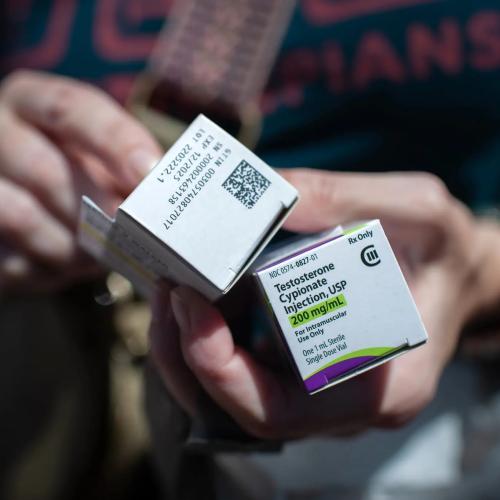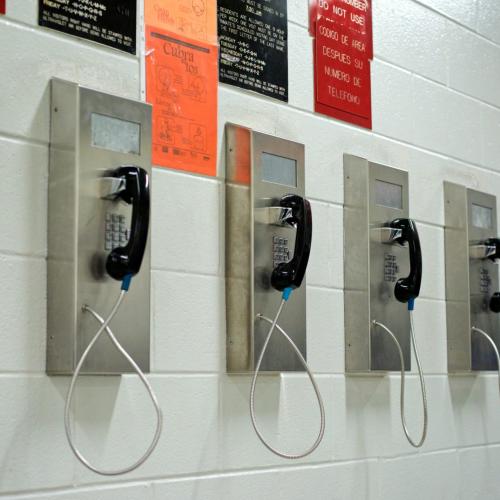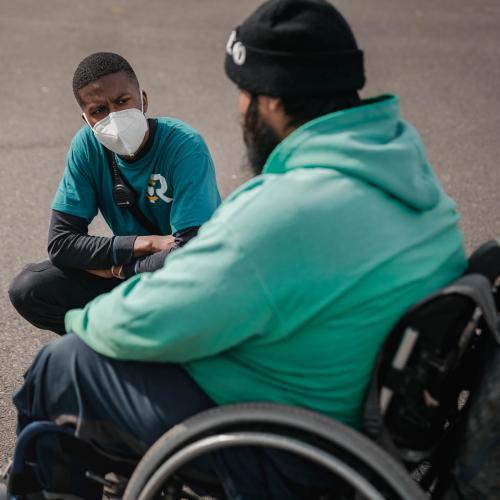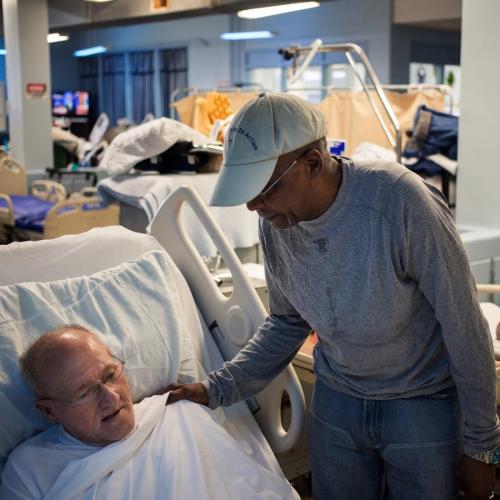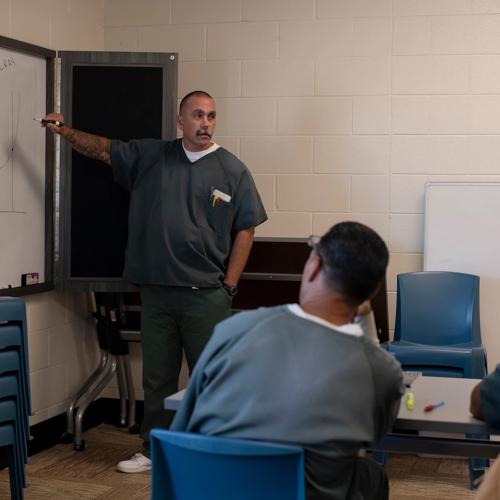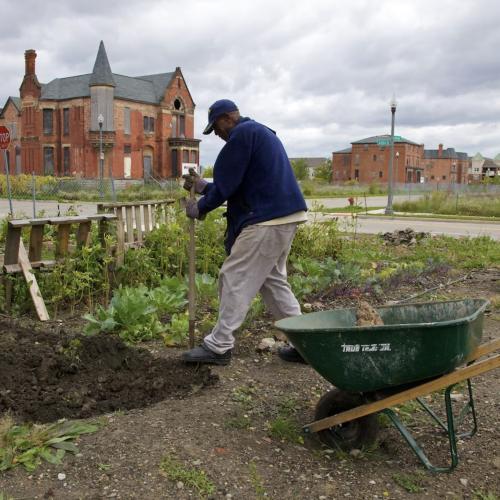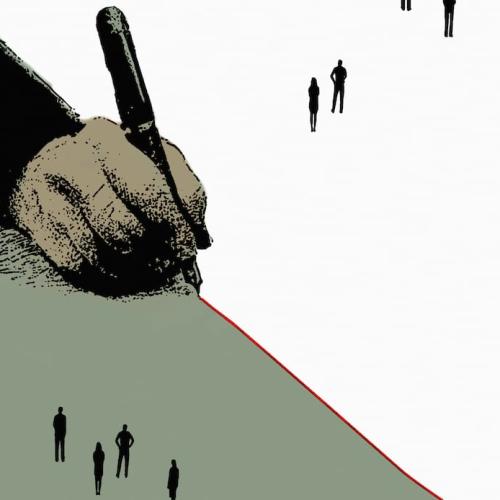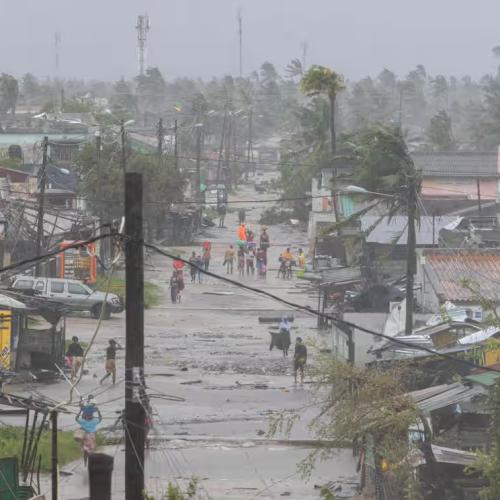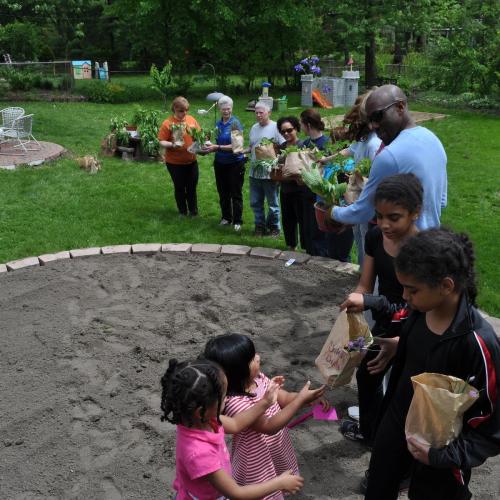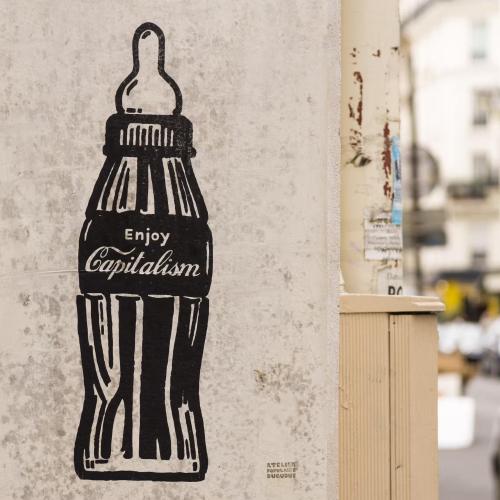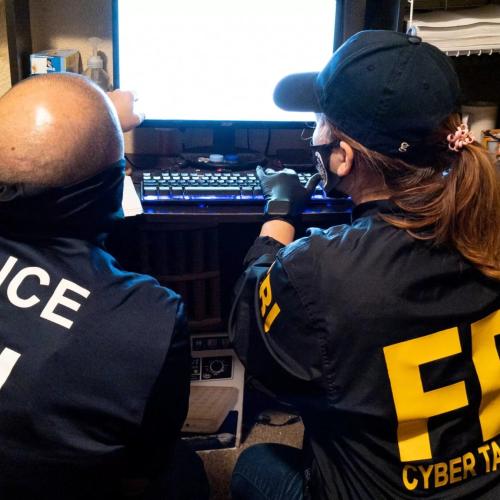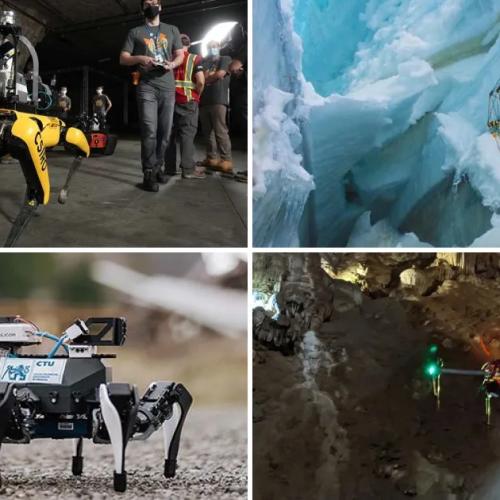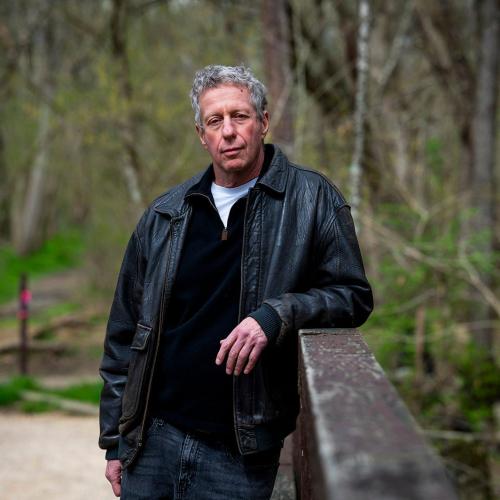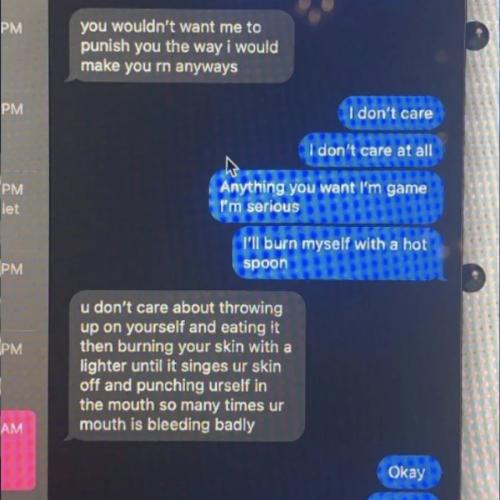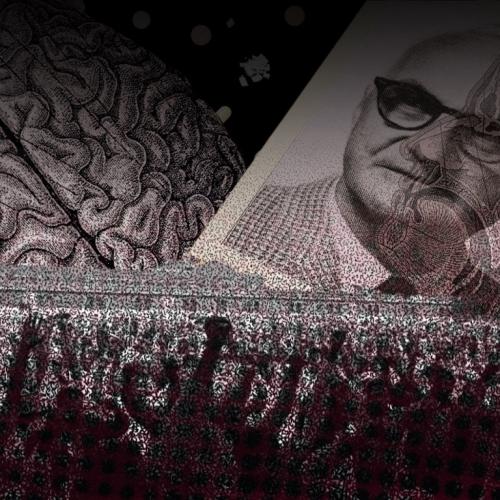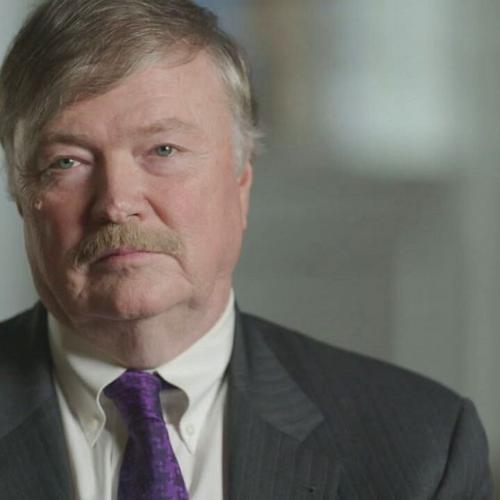Inspiring: Top Human Interest Stories News Stories
Below are key excerpts of inspiring news articles on top human interest stories from reliable news media sources. If any link fails to function, a paywall blocks full access, or the article is no longer available, try these digital tools.
For further exploration, delve into our Inspiration Center.
We’ve all heard stories about extraordinary climbers. These are people who defy the stakes in an attempt to beat the odds every time they summit a mountain that others have only seen in photos. Whereas the average hiker has seen upwards of only 10,000 feet, extreme athletes and professional alpinists have explored the summits of mountains towering well over 18,000 feet. For some, the ultimate summit sits at a harrowing height of 29,032 feet. It’s unimaginable: A temperature so cold that few living organisms can survive its inhospitable conditions. A lack of oxygen at its highest peak, where not even a helicopter can reach those who might be stranded. Despite all of those dangers, one woman holds the world record for surviving this not once, but nine times. That remarkable woman is Lhakpa Sherpa, a Nepali native born in the small Himalayan village of Balakharka who is about to reset her own record this year. Lhakpa Sherpa currently holds the Guinness World Record for the female climber with the most successful ascents of Everest to date. This is a record that she has held consistently for more than two decades now. Lhakpa is one of 11 children, five of whom have summited Everest. It was here that her love began, and it would become a lifelong affair with the mountains that she grew up admiring every single day. As an adult, Lhakpa is a single parent of three children, with whom she also shares her love for mountain climbing and hiking.
Note: Explore a treasure trove of concise summaries of incredibly inspiring news articles which will inspire you to make a difference.
A motorist in the Netherlands sacrificed his own vehicle to save another motorist who was having a seizure on the highway. Henry Temmermans from Nunspeet was driving on the A28 highway near Harderwijk on Friday afternoon when he saw another car driving in the grass on the highway. He peered into her window and realized she was unconscious. "I didn't hesitate for a moment. I had to do something," he [said]. He sped up to get in front of the woman's car and then slowed down so she would crash into him. His plan worked. The woman crashed into the back of his car and came to a complete stop. Behind them was another motorist who managed to record the entire incident on his dashcam. "We both got out immediately. He called 112 and then we looked in the car together," Temmermans said. An ambulance arrived 10 minutes later and took the woman to the hospital. She suffered a few broken ribs but will be okay. Temmermans had to call a [tow] truck as his vehicle was no longer drivable. "The other driver took me home. That turned out to be an old acquaintance from 25 years ago, when we were both young and wild," he said. The next day, the daughter and husband of the woman contacted Temmermans. "They were very grateful to me," he said.
Note: Explore a treasure trove of concise summaries of incredibly inspiring news articles which will inspire you to make a difference.
Three British women, one of whom has incurable cancer, have shattered the world record for rowing across the Atlantic. Kat Cordiner, who has secondary ovarian cancer, and teammates Abby Johnston and Charlotte Irving, arrived in Antigua on Sunday evening. The women completed the 3,000-mile crossing from La Gomera in the Canary Islands to English Harbour in 42 days ... knocking an astonishing seven days off the female trio record in the Talisker Whisky Atlantic Challenge. Rowing the world’s second largest ocean is acknowledged as the ultimate endurance race. More people have summitted Mount Everest than have successfully rowed the Atlantic and fewer than 20% of ocean rowers are women. It is thought Ms Cordiner is the first person to tackle this challenge as a cancer patient. The women are raising money for Cancer Research UK, Macmillan Cancer Support and The Royal Marsden Cancer Charity. Race organisers said they had shown the impossible was possible. Ms Cordiner, 42, Ms Irving, 31, and Ms Johnston, 32, were on a 25ft boat – called Dolly Parton – rowing two hours on and two hours off. During their epic trip they experienced scorching heat, enormous night-time waves, sleep deprivation, blisters and callouses on their hands, and sharks trailing their small boat. Ms Cordiner said: "The doctors have told me I don’t have decades, I have years, so I really want to make the most of them. I don’t want to muck around doing stuff that doesn’t matter – I want to do things that are challenging and fun."
Note: Explore a treasure trove of concise summaries of incredibly inspiring news articles which will inspire you to make a difference.
One man is on a mission to become the first double amputee to sail around the world alone. Dustin Reynolds is currently docked at Bristol Marine. He refers to himself on social media as “The Single Handed Sailor,” as he lost an arm and a leg in a tragic car crash in 2008. “I was trying to decide what to do next with my life,” he said, “Randomly I was on the internet and I found a list of people who had set the record for sailing around the world alone. I was like, ‘Well there’s no double amputee on the list, I guess I’ll just do that.'” And that’s exactly what he’s been doing for the past six years. He began his journey in June of 2014. Reynolds essentially taught himself how to sail through reading and watching videos on the internet. He mastered it single-handedly, literally, through trial and error. “Using one hand takes longer. You have to practice and sometimes use profanities. If that doesn’t work you have to think of something else to do,” said Reynolds. He started his circumnavigation from his home in Hawaii and so far has sailed through the South Pacific, Southeast Asia, and Africa. “It’s a really meditative thing – spending that much time by yourself,” he said. Reynolds actually went bankrupt trying to pay all his medical bills after the crash in 2008, so his entire adventure is funded through crowdsourcing. In each new place he stops, he tries immersing himself in the culture there, as well as shares his own story. His ultimate goal is to [complete] his circumnavigation in November of 2021.
Note: Listen to an inspiring podcast of this courageous, caring man and his intense journey through life. Explore a treasure trove of concise summaries of incredibly inspiring disabled persons news articles which will inspire you to make a difference.
Quanesha Burks ordered medium fries with no salt and a side of sweet and sour sauce at McDonald’s. She doesn’t do this often, but the day after making her first Olympic team, she decided to treat herself. “I just ate it with so much gratitude in my mouth,” Burks says. Before Burks was a full-time professional long jumper, her only previous job experience was working at the McDonald’s in Hartselle, Ala., as a 17-year-old. The town of 14,000 people was also where she and her siblings were raised by her grandparents. She remembers the early years as a struggle, watching her family live paycheck to paycheck. While at Hartselle High School, Burks quickly took notice of her classmates using sports as a way to get college scholarships. When track season rolled around ... she finished third at the 2012 USATF National Junior Olympics. “I remember looking up the requirements to earn a full scholarship and I wrote those goals down,” Burks says. “I jumped 20 feet and that’s when everything changed.” At Alabama, she became the first in her family to attend college and went on to have a successful career by setting school records, earning All-America honors and winning the 2015 NCAA outdoor and 2016 NCAA indoor long jump titles.“It felt like all the odds were against me,” Burks says. “I was facing so much, but I kept going back to when I worked at McDonald’s. I had my goals set and I knew I could do it.”
Note: Explore a treasure trove of concise summaries of incredibly inspiring news articles which will inspire you to make a difference.
Linda Herring always wanted a big family. But she never imagined that she would foster more than 600 children and turn her home into a safe haven where every child was given shelter, food, clothing, and most importantly, endless amounts of love. Now 75 years old, Herring has been fostering children for nearly five decades in Johnson County, Iowa. "My best friend was doing foster care for teenage girls and I thought, 'Well, that would be nice to do the same,' but I wanted little kids," Herring told CNN. "So, I talked to the Department of Human Services and agreed to take kids with medical needs." Herring is not just a foster mom. For her eight children, three of which were foster children she and Bob adopted, she was just "Mom." One of those children is 39-year-old Anthony Herring. He was 6 months old when he was placed in the Herring household. When he was 3 years old, the Herring family officially adopted him. "I appreciate being adopted even more today as a parent then I did when I was a child," Anthony Herring told CNN. "I'm forever grateful for the life I was given. She and Dad have both taught me that family isn't determined by blood, it's who you have in your life to love." He said that his mom taught him how to appreciate and understand children with special needs. When it comes to Herring's inspiration to foster children, she had one explanation: love. "I would just love (my foster kids) just like they were my own, probably more than I should," Herring said.
Note: Explore a treasure trove of concise summaries of incredibly inspiring news articles which will inspire you to make a difference.
Earl Moore remembers the day his father walked out. Moore discovered the power of opioids to take that pain away while attending college at the University of Kentucky in Lexington. Moore's addiction lasted more than 15 years - before he finally found the help he needed. It was a nightmare odyssey that led him to steal his grandmother's cancer pain medication and his police officer brother's ATM card to pay for pills. Not until Moore says he found a 12-step program and a mentor who showed him the art of building stringed instruments - did he find the self-love and confidence that turned his life around for good. Moore was trying to get clean yet again in 2012 when he heard a master luthier - an expert stringed-instrument maker - was coming to his hometown of Hindman, a tiny hamlet nestled in the lush mountains of Eastern Kentucky. Moore had been doing carpentry, building cabinets and had a love for guitars. Moore found himself in Naselroad's wood shop nearly every day learning how to craft guitars from Appalachian native hardwoods in a town where the mountain dulcimer was first made in the late 1800s. "Music has always been a part of this community ever since pioneer days," said Naselroad. What started out as a one-year apprenticeship became a six-year journey that brought Moore back to life. Since he began, Moore has made more than 70 instruments. He's sold many of them and kept others. Moore's success inspired the creation of the "Culture of Recovery" arts program at The Appalachian Artisan Center.
Note: Explore a treasure trove of concise summaries of incredibly inspiring news articles which will inspire you to make a difference.
Jocelynn James, a recovered drug addict ... saved the life of the police officer who put her in jail nearly a decade ago. Between 2007-2012, James was arrested 16 times for theft and drug charges. I was just living a really bad life, doing a lot of really bad things that I shouldnt have had no business doing, James said. Terrell Potter, a former officer with Phil Campbell Police Department, said James was going through a difficult place in her life. She was out running crazy, stealing and doing drugs, Potter said. I locked her up a couple of times. James said she was finally able to get her life straightened out, and on Nov. 5, she will celebrate eight years out of jail and eight years sober. James said Potter saved her life by arresting her and leading her to turn her life around. Last November, Potter learned that his kidney was failing, only functioning at 5%. Doctors told Potter that he would face a seven to eight-year waiting period for a kidney. After scrolling on her phone on Facebook, James learned that Potter needed a kidney. I just threw my phone down and the holy spirit told me right then that I had that mans kidney. After a series of hospital tests, James learned that they were a perfect match. If you asked me 100 names of who may give me a kidney, her name would have not been on the list, Potter said. On July 21, Potter received a successful kidney transplant. All the numbers were great. It started working from the time it was put in, Potter said. Her giving me a kidney ... extended my life.
Note: Explore a treasure trove of concise summaries of incredibly inspiring news articles which will inspire you to make a difference.
As doctors in London performed surgery on Dagmar Turner's brain, the sound of a violin filled the operating room. The music came from the patient on the operating table. In a video from the surgery, the violinist moves her bow up and down as surgeons behind a plastic sheet work to remove her brain tumor. The King's College Hospital surgeons woke her up in the middle of the operation in order to ensure they did not compromise parts of the brain necessary for playing the violin, such as parts that control precise hand movements and coordination. "We knew how important the violin is to Dagmar, so it was vital that we preserved function in the delicate areas of her brain that allowed her to play," Keyoumars Ashkan, a neurosurgeon at King's College Hospital, said in a press release. Prior to Dagmar's operation they spent two hours carefully mapping her brain to identify areas that were active when she played the violin and those responsible for controlling language and movement. Waking her up during surgery then allowed doctors to monitor whether those parts were sustaining damage. "The violin is my passion; I've been playing since I was 10 years old," Turner said in the hospital press release. "The thought of losing my ability to play was heart-breaking but, being a musician himself, Prof. Ashkan understood my concerns." The surgery was a success, Ashkan said: "We managed to remove over 90 percent of the tumour ... while retaining full function of her left hand."
Note: Explore a treasure trove of concise summaries of incredibly inspiring news articles which will inspire you to make a difference.
When police found the unconscious man in a Southern California Motel 6, the IDs on him said he was Michael Thomas Boatwright from Florida. But when the man awoke at Desert Regional Medical Center a few days later, he said he'd never heard of Boatwright. He didn't recall serving in the U.S. Navy. Or of being born in Florida. And he didn't speak a word of English. The man said his name was Johan Ek. And he said it in Swedish. Today, the 61-year-old man says he has come to terms with the name "Michael Boatwright," but only because doctors told him he should. He still feels like Johan Ek from Sweden. And he can't explain why. Everything Boatwright knows about his life before February 28 he knows because his social worker [Lisa Hunt-Vasquez] told him or because he read it on websites. He told CNN he learned that in 1987 he operated a consulting company called Kultur Konsult Nykoping. That is somewhat of a Swedish connection. He doesn't have any independent knowledge of his life before he woke up in the hospital. He still feels isolated in the hospital, so Hunt-Vasquez encouraged him to reach out to members of the local Swedish-American community. "They said he was getting depressed because he wasn't able to communicate," said Linda Kosvic, chairman of the Vasa Order of America chapter in San Jacinto, California. "We've been trying to provide him support and make him feel more comfortable." Members visit him in the hospital, bringing him Swedish foods.
Note: Explore a treasure trove of concise summaries of incredibly inspiring news articles which will inspire you to make a difference.
Carpenter Dale Schroeder ... was a frugal man who, over a lifetime without a family of his own, put together a $3 million scholarship fund that has made it possible for 33 people to attend college. "He was that kind of a blue-collar, lunch pail kind of a guy. Went to work every day, worked really hard, was frugal like a lot of Iowans," Steve Nielsen, Schroeder's lawyer who helped arrange the scholarships, told CNN. "I never got the opportunity to go to college and so I'd like to help kids go to college," Schroeder told Nielsen 14 years ago, the lawyer said. "I kinda was curious, I said 'how much are we talking about Dale?' And he said, 'Oh just shy of $3 million' and I nearly fell out of my chair," Nielsen said. Schroeder died in 2005, but he left behind two pairs of jeans, a rusty truck and instructions to allocate the funds to small-town Iowa kids, CNN reported. "I grew up in a single-parent household and I had three older sisters so paying for all four of us was never an option," Kira Conrad, the last of the 33 to have their college tuition paid in full by Schroder's fund, told CNN. "For a man that would never meet me, to give me basically a full ride to college, that's incredible. That doesn't happen." The 33 Iowans Schroeder put through college recently gathered around his old lunch box. They dubbed themselves "Dale's kids." It was a group of doctors, teachers and therapists with no college debt. With Schroeder gone, there's no paying it back. His only wish was they pay it forward.
Note: Explore a treasure trove of concise summaries of incredibly inspiring news articles which will inspire you to make a difference.
Dr. Olawale Sulaiman, 49, is a professor of neurosurgery and spinal surgery and chairman for the neurosurgery department and back and spine center at the Ochsner Neuroscience Institute in New Orleans. He lives in Louisiana, but splits his time between the US and Nigeria, spending up to 12 days each month providing healthcare in the country of his birth - sometimes for free. Born in Lagos Island, Lagos, Sulaiman says his motivation comes from growing up in a relatively poor region. "I am one of 10 children born into a polygamous family. My siblings and I shared one room where we often found ourselves sleeping on a mat on the floor," he told CNN. According to a report by the Global Health Workforce Alliance, Nigeria's healthcare system does not have enough personnel to effectively deliver essential health services to the country's large population. Sulaiman says he wants to use his knowledge to improve the healthcare system. In 2010, Sulaiman established RNZ Global, a healthcare development company with his wife, Patricia. The company provides medical services including neuro and spinal surgery, and offers health courses like first aid CPR in Nigeria and the US. RNZ Global has treated more than 500 patients and provided preventative medicine to up to 5,000 people in the US and Nigeria. RNZ Global also has a not-for-profit arm called RNZ foundation. The foundation, registered in 2019, focuses on managing patients with neurological diseases for free.
Note: Explore a treasure trove of concise summaries of incredibly inspiring news articles which will inspire you to make a difference.
Standing Bear was born sometime between 1829 and 1834 in the Ponca tribes native lands in northern Nebraska. In 1876 ... Congress declared that the Poncas would be moved to Indian Territory in Oklahoma. More than a third of the Poncas died of starvation and disease including Standing Bears sister and his beloved son. Standing Bear and his burial party evaded capture while they traveled home but were caught and detained after visiting relatives at the Omaha reservation. The man who caught them, Brig. Gen. George Crook ... was moved by Standing Bears reasons for leaving the Indian Territory and promised to help him. The civil rights case that resulted was called Standing Bear v. Crook. The U.S. attorney argued that Standing Bear was neither a citizen nor a person. On the second day, Chief Standing Bear was called to testify, becoming the first Native American to do so. He raised his right hand and, through an interpreter, said: My hand is not the color of yours, but if I pierce it, I shall feel pain. If you pierce your hand, you also feel pain. The blood that will flow from mine will be the same color as yours. The same god made us both. I am a man. The judge agreed, ruling for the first time in U.S. history that the Indian is a person and has all the rights and freedoms promised in the Constitution. The judge also ordered Crook to free Standing Bear and his people immediately. Standing Bear ... buried his son alongside his ancestors. When he died there in 1908, he was buried alongside them, too.
Note: Explore a treasure trove of concise summaries of incredibly inspiring news articles which will inspire you to make a difference.
When a fire forced dozens of homeless people to leave their tents in Chicago's South Loop neighborhood, Jackie Rachev at the local Salvation Army was ready to welcome them. Little did she know a Good Samaritan was paying to put them up in hotel rooms. It's been brutally cold in Chicago, with temperatures of 20-25 below zero on Wednesday. The homeless encampment near the Dan Ryan Expressway was heated by 150 to 200 portable propane tanks -- many of them donated by generous citizens. Shortly after noon, one of the tanks in the tent city exploded because it was too close to a space heater. That left city officials with no option but to close the encampment. Rachev said she received a call from the city asking her to help provide shelter for around 70 people. But later she got another call saying it was no longer necessary -- because a Good Samaritan had offered to pay for hotel rooms. "The Salvation Army was prepared to welcome approximately 70 individuals who were affected by the explosion, but was notified those services were not necessary as the individuals were already being taken of," Rachev told CNN. "We are thrilled that they are safe and warm." Rachev said she did not know the identity of the Good Samaritan or which hotel the homeless people were booked in.
Note: Explore a treasure trove of concise summaries of incredibly inspiring news articles which will inspire you to make a difference.
Ten years ago, with her high school diploma and a backpack, Maggie Doyne left her New Jersey hometown. She ... went to India and worked with Nepalese refugees. There, she met a young girl who wanted to find her family in Nepal. Doyne went with her. That's when Doyne's life took an unexpected turn. A decade-long civil war had just ended in the country, and Doyne witnessed its effects firsthand. "It changed me," said Doyne. "There were children with mallets that would go into the riverbed, pick up a big stone and break it into little, little pieces (to sell). And they were doing that all day, every day." Doyne called her parents and asked them to wire her the $5,000 she had earned babysitting. In 2006, she purchased land in Surkhet, a district in western Nepal. She worked for two years with the local community to build the Kopila Valley Children's Home. Today, Kopila - which means "flower bud" in Nepali - is home to about 50 children, from infants to teenagers. Doyne started the BlinkNow Foundation to support and grow her efforts. In 2010, the group opened its Kopila Valley School, which today educates more than 350 students. "Every single year we'll get from 1,000 to 1,500 applicants. And we choose the ones who are the most needful and really won't be in school without us," [said Doyne]. "Most of them live in one room, a mud hut. A lot of them are just in survival mode. We try to relieve the burden from the family, so that the child has food, medical care, books, zero fees for education."
Note: Watch an inspiring five-minute video of this amazing woman.
A nine-year old girl from Bremerton, Wash. is making a difference in her local community. In a report with KING 5 News, Hailey Ford is shown using a power tool to drive nails into the roof what looks like a miniature house. The structure is the first of 11 planned shelters she [is] building for the homeless in her area. She tells the reporter that her friend Edward is homeless and needs a dry place to sleep at night. When she realized that she could do something about it, she began piecing together a plan to build "mobile sleeping" shelters, as she calls them. The shelters come complete with insulation, tar paper, and windows, barriers that will keep out the elements and lock in the warmth. Hailey isn't the only kid acting with compassion. Five-year old Josiah Duncan had a similar reaction when he saw a hungry-looking homeless man outside of a Waffle House in Prattville, Ala., last month. The little boy began asking his mother about the man's appearance, clearly troubled. She explained that the man was homeless and Josiah requested that they buy him a meal. His mother obliged. Before the man could eat, Josiah insisted on saying a blessing. "The man cried. I cried. Everybody cried," his mother told WFSA. Other children have taken Hailey and Josiah's kindness a few steps further. Hannah Taylor, a Canadian from Winnipeg, Manitoba, founded the Ladybug Foundation when she was only eight years old. In her mission statement Hannah says, "I believe that if people know about homelessness that there are people living without a home they will want to help.
Note: Explore a treasure trove of concise summaries of incredibly inspiring news articles which will inspire you to make a difference.
At his graduation from medical school, Kevin Morton Jr. sat beside the woman who saved his life. It was nearly a decade since he was shot in an Arbys parking lot, sustaining injuries so severe that the early prognosis gave him only a 10 percent chance of survival. But Dr. Dharti Sheth-Zelmanski, the surgeon on call in the trauma unit that night, didnt let that happen. The care he received over many surgeries and his long recovery inspired Morton to evaluate what he would do with his second chance. The answer came naturally: Hed pay it forward by becoming a doctor himself. In 2012, he ... was accepted to Michigan State Universitys College of Osteopathic Medicine. He chose to specialize in general surgery, the same as Sheth-Zelmanski. He did his student rotations at St. Johns Hospital in Detroit ... where he was once a patient. Hell start his residency there in July almost nine years to the day he was brought there as a shooting victim. On his graduation day earlier this month, Morton asked Sheth-Zelmanski to hood him, an honor given to a close family member or mentor when receiving an advanced degree. Theres no greater joy than to realize what I do on a day-to-day basis can create such a change in somebody for the better, she said. I feel like I know that if anything is ever wrong with me, I know where I can go. And thats Mortons goal: to be the kind of compassionate and engaged doctor that she was for him.
Note: Explore a treasure trove of concise summaries of incredibly inspiring news articles which will inspire you to make a difference.
Life's been full of uncertainties for Reuben Nsemoh lately. Ever since he suffered a concussion in a soccer game, the suburban Atlanta teen's worried about why it's so hard for him to concentrate. He's fretted over whether he'll ever get to play his favorite sport. But the biggest stumper of all: how is it that he's suddenly speaking fluent Spanish? Nsemoh, a 16-year-old high school sophomore, ended up in [a] coma last month after another player kicked him in the head during a game. When he woke up, he did something he'd never done before: speak Spanish like a native. His parents said he could already speak some Spanish, but he was never fluent in it until his concussion. Slowly, his English is coming back, and he's starting to lose his Spanish fluency. Foreign accent syndrome is an extremely rare condition in which brain injuries change a person's speech patterns, giving them a different accent. The first known case was reported in 1941. Since then there have been a few dozen reported cases. Three years ago, police found a Navy vet unconscious in a Southern California motel. When he woke up, he had no memory of his previous life, and spoke only Swedish. In Australia, a former bus driver got in a serious car crash that left her with a broken back and jaw. When she woke up, she was left with something completely unexpected: a French accent. And earlier this year, a Texas woman who had surgery on her jaw, has sported a British accent ever since.
Note: Explore a treasure trove of concise summaries of incredibly inspiring news articles which will inspire you to make a difference.
Aidan Dwyer, 13, went to the woods and had a eureka moment that could be a major breakthrough in solar panel design. The 7th-grader ... noticed a pattern among tree branches, and determined (as naturalist Charles Bonnet did in 1754) that the pattern represented the Fibonacci sequence of numbers. Aidan wondered why, and figured it had something to do with photosynthesis. In a pretty innovative experiment, this intrepid young scientist set about duplicating an oak tree, comparing its sunlight-capturing abilities to a traditional rooftop solar panel array. He copied the pattern using a computer program, and built an oak tree-shaped solar array out of PVC pipe. He next built a flat-panel array mounted at 45 degrees, like a typical home rooftop array, and attached data loggers to each model to monitor voltage. Aidan's award-winning essay ... walks you through his experiment design and his results. But the short story is that his tree design generated much more electricity - especially ... when the sun is at its lowest point in the sky. At that point, the tree design generated 50 percent more power, without any adjustments to its declination angle. He determined the tree's Fibonacci pattern allowed some solar panels to collect sunlight even if others were in shade, and prevented branches on a tree from shading other branches. Now Aidan is studying other tree species and improving his PVC model to determine how it could be used to make more efficient solar arrays.
Note: Don't miss the pictures of this amazing invention at the link above. Explore a treasure trove of concise summaries of incredibly inspiring news articles which will inspire you to make a difference.
Maybe it's the 17 freezers he keeps running in his apartment, or his nodding eyes from lack of sleep. Spend a few hours with Allan Law and you start to realize a little crazy comes with his kindness. "It's stupid," Law agrees. "Last night I got no sleep out in the streets, but I slept two hours today." Next week, the Minnesotan known as the "Sandwich Man" will be honored by Minneapolis Rotary for his efforts on behalf of homeless people. Law started serving disadvantaged Minnesotans while still a teacher for Minneapolis Public Schools. His efforts hit high gear when he retired 16 years ago. Working out of the van he drives through the night, last year Law handed out more than 700,000 sandwiches, 7,000 pair of socks and 75,000 bus tokens. Some of his work is funded by his teaching pension, the rest is covered by donations to his non-profit organization, Minneapolis Recreation Development. Those 17 freezers in his apartment store sandwiches made by 800 church, business, and civic groups each year. Law delivers some of the sandwiches for distribution by shelters, others he hands out by himself. "I bring sandwiches so not only will they have something to eat, but when they leave in the morning they can take a couple sandwiches with them." He also makes the rounds to gas stations during the night, collecting food that would otherwise go into dumpsters, for quick distribution to the homeless. "Sometimes I get emotional," Law says. "Somebody has to care."
Note: Watch a great, five-minute video on this caring man who makes a big difference.
Important Note: Explore our full index to revealing excerpts of key major media news stories on several dozen engaging topics. And don't miss amazing excerpts from 20 of the most revealing news articles ever published.








